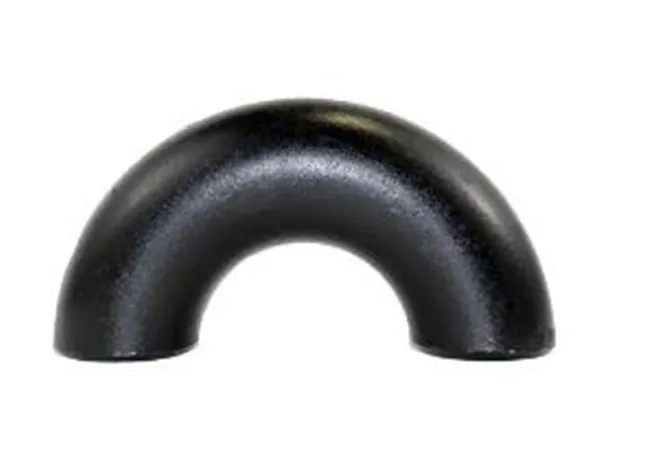-
Cangzhou Yulong Steel Co., Ltd.
-
Phone:
+86 13303177267 -
Email:
admin@ylsteelfittings.com
- English
- Arabic
- Italian
- Spanish
- Portuguese
- German
- kazakh
- Persian
- Greek
- French
- Russian
- Polish
- Thai
- Indonesian
- Vietnamese
- Zulu
- Korean
- Uzbek
- Hindi
- Serbian
- Malay
- Ukrainian
- Gujarati
- Haitian Creole
- hausa
- hawaiian
- Hebrew
- Miao
- Hungarian
- Icelandic
- igbo
- irish
- Japanese
- Javanese
- Kannada
- Khmer
- Rwandese
- Afrikaans
- Albanian
- Amharic
- Armenian
- Azerbaijani
- Basque
- Belarusian
- Bengali
- Bosnian
- Bulgarian
- Catalan
- Cebuano
- China
- China (Taiwan)
- Corsican
- Croatian
- Czech
- Danish
- Esperanto
- Estonian
- Finnish
- Frisian
- Galician
- Georgian
- Kurdish
- Kyrgyz
- Lao
- Latin
- Latvian
- Lithuanian
- Luxembourgish
- Macedonian
- Malgashi
- Malayalam
- Maltese
- Maori
- Marathi
- Mongolian
- Myanmar
- Nepali
- Norwegian
- Norwegian
- Occitan
- Pashto
- Dutch
- Punjabi
- Romanian
- Samoan
- Scottish Gaelic
- Sesotho
- Shona
- Sindhi
- Sinhala
- Slovak
- Slovenian
- Somali
- Sundanese
- Swahili
- Swedish
- Tagalog
- Tajik
- Tamil
- Tatar
- Telugu
- Turkish
- Turkmen
- Urdu
- Uighur
- Welsh
- Bantu
- Yiddish
- Yoruba

Dec . 13, 2024 02:01 Back to list
Ways to Cap Copper Pipe without Using Soldering Techniques and Tools
How to Cap Copper Pipe Without Solder A Step-by-Step Guide
Capping a copper pipe is a common task in plumbing, especially when you need to stop the flow of water from an existing pipe without soldering. While traditional methods often involve soldering a cap onto the pipe, there are alternatives that are faster, cleaner, and require less expertise. In this guide, we'll walk you through how to cap a copper pipe without using solder.
Materials You Will Need
1. Copper Cap Fitting Choose a cap that fits the diameter of your copper pipe. 2. Copper Pipe Cutter A tool designed to cut copper piping cleanly. 3. Pipe Wrench To hold the pipe in place if necessary. 4. Deburring Tool To smooth out the edges of the cut pipe. 5. Teflon Tape For added leak protection. 6. Pipe Plug or Compression Fitting Optional for different methods of capping. 7. Adjustable Wrench For tightening compression fittings.
Step 1 Prepare the Area
Before you begin, ensure that the water supply is turned off to the section of piping you will be working on. Open a faucet at the highest point in your house to let the water drain from the pipes. This will prevent any spills or water flow while you work.
Step 2 Cut the Copper Pipe
Using the copper pipe cutter, mark the area of the pipe you want to cap. Make sure to leave enough pipe length for the cap or fitting. Position the cutter around the pipe and tighten it slightly. Rotate the cutter around the pipe, tightening it a little more with each turn. This should make a clean cut without deforming the pipe.
Step 3 Deburr the Pipe
how to cap copper pipe without solder

Once you’ve cut the pipe, the edge may be sharp or have burrs that can interfere with the fitting. Use a deburring tool to smooth the edge of the cut pipe. A smooth edge will help ensure a tight seal when you attach the cap.
Step 4 Apply Teflon Tape (Optional)
For additional protection against leaks, you may want to wrap Teflon tape around the threads of the cap or the fitting you will be using. This step is particularly useful if you’re using a threaded cap or compression fitting.
Step 5 Attach the Cap
- Using a Copper Cap If you are using a simple copper cap, just push it onto the end of the pipe until it’s flush. If you’re using a compression fitting, slide the nut and ring onto the pipe first, then insert the cap and tighten the nut with an adjustable wrench. - Using a Compression Fitting If you choose this method, attach the compression ring and nut to the pipe. Make sure everything is aligned correctly, and then tighten the nut with the adjustable wrench. Be careful not to overtighten, as this can damage the fitting or the pipe.
Step 6 Check for Leaks
Once the cap is firmly in place, turn the water supply back on slowly. Check the capped area for any signs of leaking. If you notice a leak, turn off the water, inspect the fitting, and retighten it if necessary or replace the cap if it’s damaged.
Conclusion
Capping a copper pipe without soldering is a straightforward process that can save you time and effort. By using the right tools and following the steps outlined above, you can successfully cap off a pipe with minimal hassle. Whether you’re a DIY enthusiast or a homeowner looking to tackle minor plumbing issues, this method provides an efficient solution. Always remember to prioritize safety and ensure the workspace is clear of obstructions to avoid accidents during the process. Happy plumbing!
Latest news
-
ANSI 150P SS304 SO FLANGE
NewsFeb.14,2025
-
ASTM A333GR6 STEEL PIPE
NewsJan.20,2025
-
ANSI B16.5 WELDING NECK FLANGE
NewsJan.15,2026
-
ANSI B16.5 SLIP-ON FLANGE
NewsApr.19,2024
-
SABS 1123 FLANGE
NewsJan.15,2025
-
DIN86044 PLATE FLANGE
NewsApr.19,2024
-
DIN2527 BLIND FLANGE
NewsApr.12,2024
-
JIS B2311 Butt-Welding Fittings LR/SR 45°/90° /180°Seamless/Weld
NewsApr.23,2024











